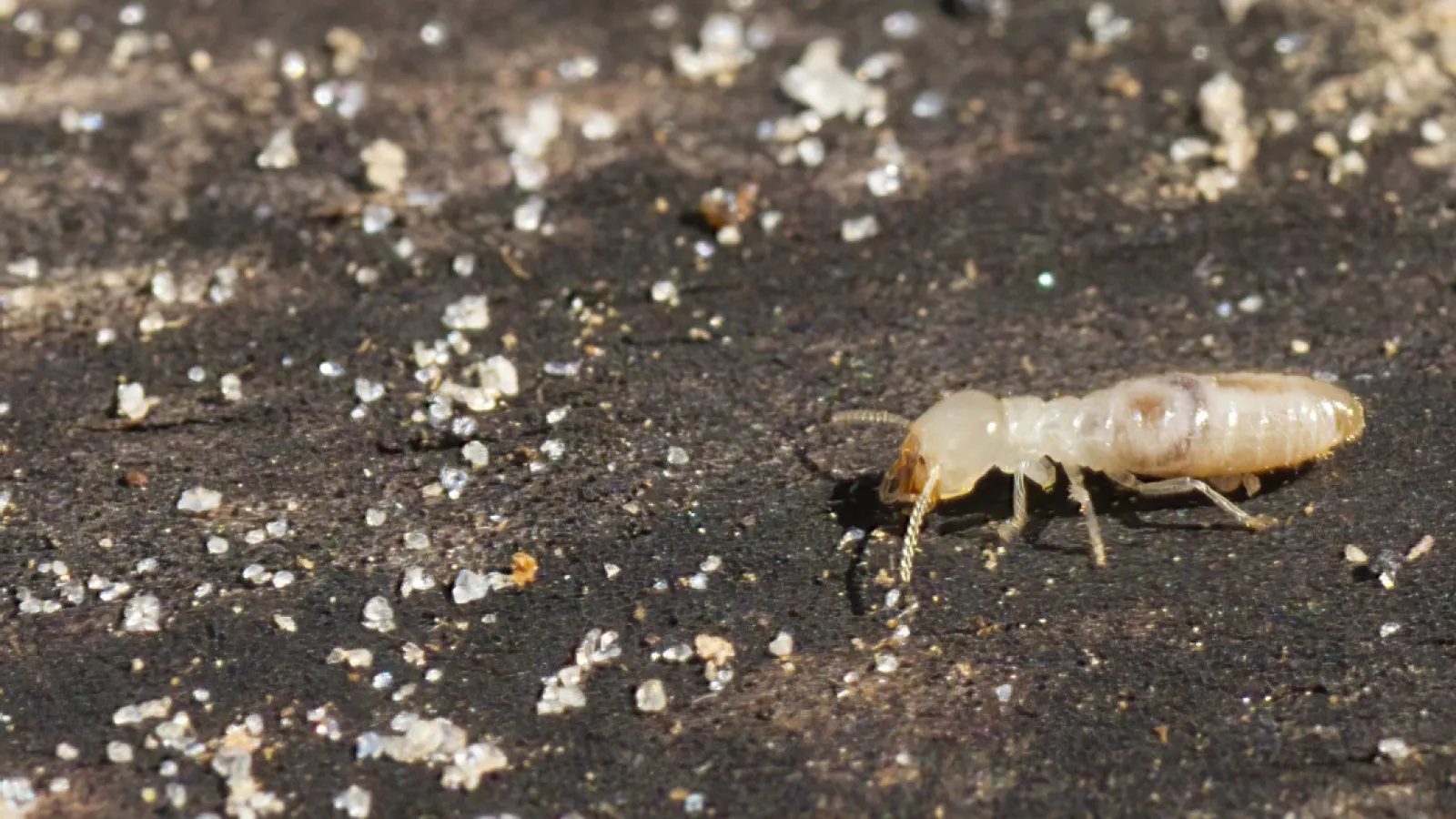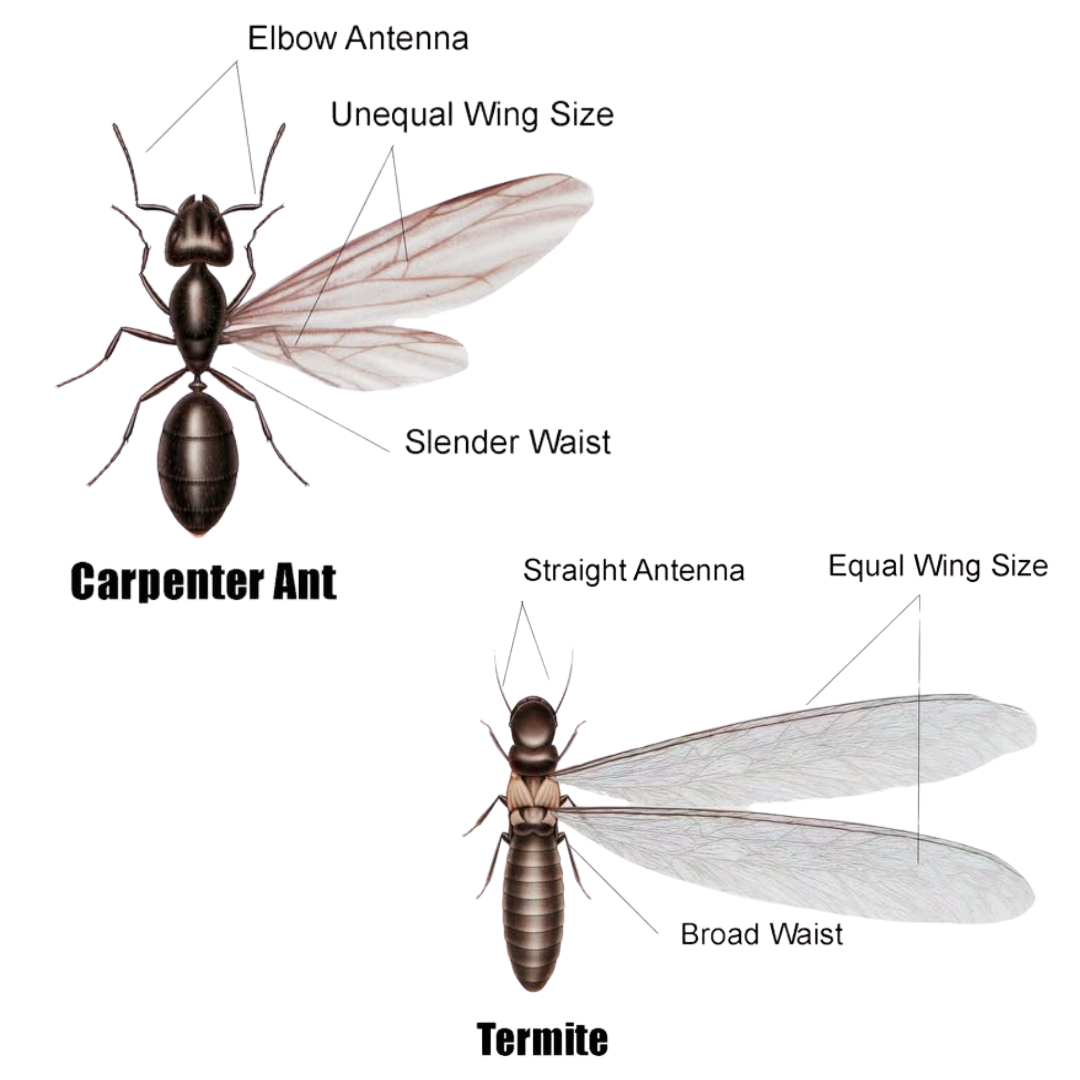
Eastern Subterranean Termites
Latin Name: Reticulitermes flavipes
Eastern Subterranean Termites in the DMV Area
Eastern Subterranean Termites (Reticulitermes flavipes) are the most common and economically damaging termite species in the DMV region (District of Columbia, Maryland, and Virginia). Native to North America, they thrive in moist, temperate environments, making them a year-round threat to homes and structures throughout the Mid-Atlantic.
Identification
Eastern Subterranean Termite colonies consist of several castes:
-
Workers: Creamy-white, wingless, and approximately 1/8 inch long.
-
Soldiers: Similar in size to workers but with large, dark heads and strong mandibles.
-
Swarmers (Alates): Dark brown or black with two pairs of equal-length wings; about 3/8 inch long. Swarmers typically emerge in spring, particularly from March through May.
If you find winged termites indoors near light sources or window sills, it may indicate an active infestation within your home.
Behavior and Habitat
These termites live in underground colonies and travel above ground through protective mud tubes to reach wood and other cellulose materials. They prefer wood that is in contact with soil or is exposed to high humidity and moisture. Colonies can grow to include hundreds of thousands of termites and remain hidden for months or even years, causing damage before they are detected.
Signs of Infestation
Common indicators of Eastern Subterranean Termites include:
-
Mud tubes along foundation walls, sill plates, or crawlspaces
-
Hollow-sounding or soft wood
-
Bubbling paint or distorted drywall
-
Discarded wings near windows, doors, or vents
Entry Points and Risk Factors
In the DMV region, common termite entry points include:
-
Cracks in foundations or basement walls
-
Gaps around plumbing or electrical conduits
-
Wood in direct contact with soil (e.g., decks, fence posts, porch supports)
-
Mulch or landscaping that is too close to siding
-
Moisture problems such as leaks or inadequate drainage
Older homes, homes with crawlspaces, and properties with poor ventilation or high soil moisture are particularly vulnerable.
Similar Pests: Common Ants, Carpenter Ants
Photo credit: National Pest Management Association | Tom Myers
Eastern Subterranean Termite FAQs
How do I know if I have Termites?
Look for mud tubes along your foundation or walls, wood that sounds hollow when tapped, bubbling paint, or piles of discarded wings near windows. You may also hear soft clicking or rustling sounds inside your walls.
When do these termites usually swarm?
They typically swarm in the spring, especially after rain, when the weather starts warming up—usually from March through May in the DMV region.
How fast can termites damage a home?
A mature Eastern subterranean termite colony can cause significant damage over time—though it usually takes months or even years to become severe.
What’s the difference between termites and ants?
Termites and ants are often mistaken for one another, especially during swarming season when both release winged reproductives. However, they differ in several key ways that are easy to identify once you know what to look for.
The most noticeable difference is in body shape: termites have a straight, thick waist, while ants have a narrow, pinched waist. Their antennae are also different—termite antennae are straight and beaded, whereas ants have elbowed, bent antennae. Another major distinction is in their wings. Termites have two pairs of wings that are equal in length and longer than their body, while ants have wings of unequal length—the front wings are longer than the hind wings.
Behaviorally, termites feed on cellulose-based materials like wood, drywall, and paper, causing structural damage to homes. Ants, on the other hand, typically seek food like sweets, proteins, or grease and don't damage wood—except for carpenter ants, which tunnel through it but don't eat it.

How do termites get in a home?
Termites enter through cracks in foundations, gaps around plumbing or electrical lines, or any area where wood touches the soil. High moisture around the home makes it easier for them to thrive.
What attracts termites to my house?
- Moisture is the biggest factor—things like leaks, poor drainage, clogged gutters, or wood-to-soil contact can all attract termites.
- They're also drawn to mulch, rotting wood, and crawlspaces with poor ventilation.